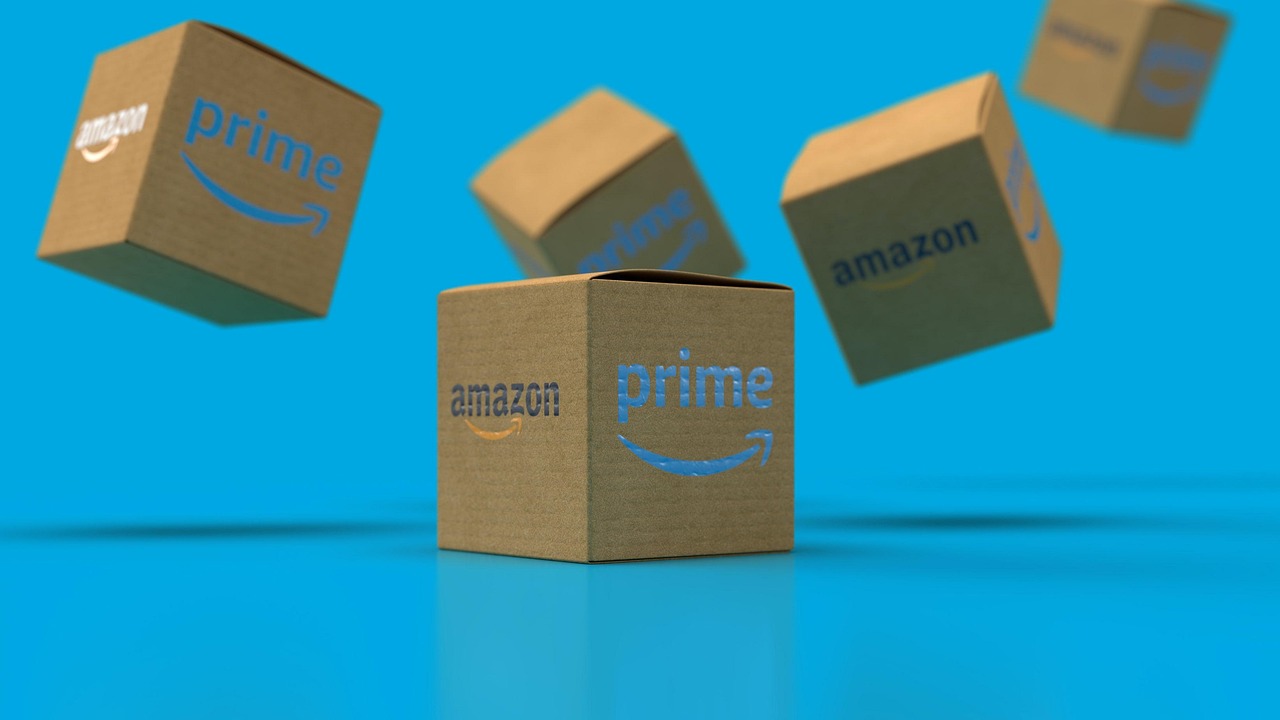Navigating the ever-expanding world of online sales can feel like charting a course through uncharted waters. But fear not, aspiring entrepreneur or seasoned business owner! Whether you’re launching a new e-commerce venture or looking to optimize your existing online sales strategy, this guide will equip you with the knowledge and insights you need to thrive in the digital marketplace. We’ll explore the fundamentals, dive into proven strategies, and uncover the secrets to maximizing your online sales potential.
Understanding the Landscape of Online Sales
The Growth of E-Commerce
E-commerce has revolutionized the way we buy and sell goods and services. It’s no longer a niche market; it’s a dominant force in the retail industry. The continuous growth of e-commerce is fueled by factors such as:
- Increased internet penetration: More people than ever have access to the internet, opening up new markets and customer bases.
- Mobile shopping: Smartphones have made online shopping convenient and accessible anytime, anywhere.
- Changing consumer behavior: Consumers are increasingly comfortable purchasing online, attracted by the convenience, wider selection, and competitive prices.
- Global reach: E-commerce allows businesses to reach customers beyond geographical boundaries.
For example, the global e-commerce market is projected to reach trillions of dollars in the coming years, demonstrating the immense potential for online businesses.
Different Online Sales Models
Before diving in, it’s crucial to understand the various models you can adopt for selling online. Here are a few common options:
- Direct-to-Consumer (DTC): Selling directly to consumers through your own website or online store. This gives you complete control over branding, customer experience, and pricing. Example: A local bakery selling cakes directly from their website.
- Marketplace Sales: Selling your products through established online marketplaces like Amazon, eBay, or Etsy. This provides access to a large customer base but often involves fees and competition. Example: An artisan selling handmade jewelry on Etsy.
- Social Commerce: Selling products directly through social media platforms like Instagram, Facebook, or TikTok. This leverages social media’s reach and engagement for sales. Example: A clothing boutique posting shoppable images on Instagram.
- Subscription Boxes: Offering curated products or services on a recurring subscription basis. This provides a predictable revenue stream and fosters customer loyalty. Example: A coffee company offering monthly deliveries of unique coffee blends.
Building Your Online Storefront
Choosing the Right E-Commerce Platform
Your e-commerce platform is the foundation of your online store. Selecting the right one is critical for a smooth and efficient operation. Consider these factors:
- Scalability: Can the platform handle your growing business needs?
- Ease of Use: Is it user-friendly for both you and your customers?
- Customization Options: Can you customize the design and functionality to match your brand?
- Payment Gateway Integration: Does it support the payment methods you want to offer?
- SEO Friendliness: Is the platform optimized for search engines?
- Pricing: What are the upfront and ongoing costs?
Popular e-commerce platforms include Shopify, WooCommerce (for WordPress), Wix, Squarespace, and BigCommerce. Each platform offers different features and pricing plans to suit various business needs.
Designing a User-Friendly Website
Your website’s design plays a vital role in attracting and retaining customers. Focus on these key elements:
- Clear Navigation: Make it easy for visitors to find what they’re looking for. Use a logical menu structure and clear product categories.
- High-Quality Product Images: Showcase your products with professional, high-resolution images and videos.
- Detailed Product Descriptions: Provide accurate and informative descriptions that highlight the benefits of your products.
- Mobile Responsiveness: Ensure your website is optimized for mobile devices, as many customers shop on their smartphones.
- Fast Loading Speed: Optimize your website’s loading speed to prevent visitors from leaving due to slow performance. Use tools like Google PageSpeed Insights to identify areas for improvement.
- Secure Checkout Process: Implement a secure checkout process with SSL encryption to protect customer data. Display security badges to build trust.
Example: If you’re selling clothing, include multiple images showcasing the garment from different angles and in various lighting conditions. Provide detailed information about the fabric, fit, and care instructions.
Driving Traffic and Generating Leads
Search Engine Optimization (SEO)
SEO is the process of optimizing your website to rank higher in search engine results. This is crucial for attracting organic traffic and increasing visibility.
- Keyword Research: Identify the keywords that your target audience is using to search for products like yours. Use tools like Google Keyword Planner and Semrush.
- On-Page Optimization: Optimize your website’s content, including titles, descriptions, and product pages, with relevant keywords.
- Off-Page Optimization: Build high-quality backlinks from reputable websites to improve your website’s authority.
- Technical SEO: Ensure your website is technically sound, with a clean structure, fast loading speed, and mobile responsiveness.
Actionable Takeaway: Start by optimizing your product titles and descriptions with relevant keywords. For example, instead of “Blue T-shirt,” use “Men’s Blue Cotton Crew Neck T-shirt.”
Social Media Marketing
Social media is a powerful tool for building brand awareness, engaging with customers, and driving traffic to your online store.
- Choose the Right Platforms: Focus on the social media platforms that your target audience uses the most.
- Create Engaging Content: Share valuable and engaging content that resonates with your audience. This could include product photos, videos, behind-the-scenes glimpses, and user-generated content.
- Run Targeted Ads: Use social media advertising to reach a wider audience and target potential customers based on their interests and demographics.
- Engage with Your Audience: Respond to comments and messages promptly, and participate in relevant conversations.
Example: A beauty brand might use Instagram to showcase makeup tutorials, product demonstrations, and user-generated content. They could also run targeted ads to reach women interested in beauty and skincare.
Paid Advertising (PPC)
Pay-per-click (PPC) advertising allows you to drive targeted traffic to your website by paying for each click on your ads. Popular PPC platforms include Google Ads and Bing Ads.
- Keyword Targeting: Choose relevant keywords that your target audience is using to search for products like yours.
- Ad Copy Optimization: Write compelling ad copy that highlights the benefits of your products and includes a clear call to action.
- Landing Page Optimization: Direct your ads to landing pages that are relevant to the ad copy and optimized for conversions.
- Budget Management: Set a daily or monthly budget for your PPC campaigns and monitor your results closely to optimize your spending.
Actionable Takeaway: Start with a small budget and experiment with different ad copy and targeting options to see what works best for your business.
Optimizing Conversions and Customer Experience
Streamlining the Checkout Process
A smooth and efficient checkout process is crucial for minimizing cart abandonment and maximizing conversions.
- Minimize the Number of Steps: Simplify the checkout process by reducing the number of steps required to complete a purchase.
- Offer Multiple Payment Options: Provide customers with a variety of payment options, including credit cards, debit cards, PayPal, and other popular payment methods.
- Provide Clear Shipping Information: Display shipping costs and delivery estimates upfront, so customers are not surprised by unexpected fees.
- Offer Guest Checkout: Allow customers to checkout as guests without creating an account. This can reduce friction and increase conversions.
- Secure Checkout: Ensure your checkout process is secure and uses SSL encryption to protect customer data.
Example: Amazon’s one-click ordering is a prime example of a streamlined checkout process that minimizes friction and encourages repeat purchases.
Providing Excellent Customer Service
Exceptional customer service is essential for building customer loyalty and generating positive word-of-mouth.
- Be Responsive: Respond to customer inquiries promptly and professionally.
- Offer Multiple Support Channels: Provide customers with a variety of support channels, including email, phone, live chat, and social media.
- Resolve Issues Quickly: Address customer complaints and issues quickly and efficiently.
- Go the Extra Mile: Exceed customer expectations by going above and beyond to provide exceptional service.
Actionable Takeaway: Train your customer service team to be empathetic, knowledgeable, and proactive in resolving customer issues.
Personalization and Upselling
Personalization and upselling can significantly increase your average order value and improve customer satisfaction.
- Personalized Product Recommendations: Recommend products based on customers’ past purchases, browsing history, and demographics.
- Upselling and Cross-selling: Offer related products or upgraded versions of products at the point of sale.
- Personalized Email Marketing: Send personalized email marketing campaigns that are tailored to customers’ individual interests and needs.
Example: An online bookstore might recommend books based on customers’ past purchases or browsing history. They might also offer a discount on related products or a subscription to a monthly book club.
Conclusion
Mastering online sales is an ongoing journey that requires continuous learning, adaptation, and optimization. By understanding the fundamentals, building a user-friendly website, driving targeted traffic, and providing excellent customer service, you can increase your online sales and build a thriving e-commerce business. Remember to analyze your data, track your progress, and make adjustments as needed to stay ahead of the competition and achieve your online sales goals. The digital marketplace is dynamic, but with the right strategies and a commitment to customer satisfaction, you can unlock the full potential of online sales.






